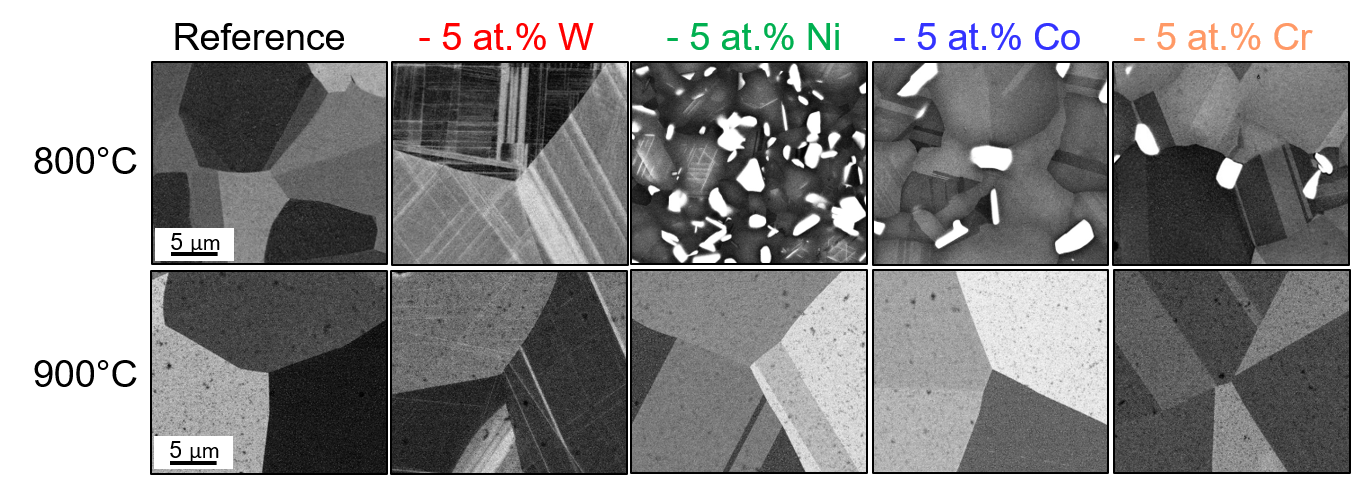- Ruhr-Universität Bochum

High entropy alloys in SFB/TR 103
Single-crystal superalloys are two-phase materials consisting of γ’-cubes, with an ordered L12 crystallographic structure, that are embedded in a disordered face-centered cubic (FCC) γ-matrix. From a fundamental viewpoint, it is of prime importance to characterize the intrinsic properties of these two phases to provide a better understanding of superalloys and guide alloy design. In this context, project B8 of the SFB/TR 103 focuses on single-phase FCC alloys, whose compositions correspond to those of the γ-matrices in superalloys. Such alloys are chemically complex and their chemical complexity is reminiscent of the high and medium entropy alloys (HEAs and MEAs), which have been investigated with the highest intensity during the last decade. For instance, the γ matrix of Ni and Co-based superalloys contains high concentrations of Ni, Co, and Cr and is therefore chemically similar to the ternary CrCoNi MEA, which exhibits outstanding mechanical properties. Each of the constituting elements affects a variety of properties and it is, therefore, a challenge to predict how alloy properties will be influenced by changes in chemical composition. In order to enable further optimization of superalloys, there must be systematic investigations into the influence of individual alloying elements on several aspects. Project B8 serves this purpose by investigating the influence of Co, Ni, Cr, and W, on phase stability, diffusion kinetics, the energy of planar defects, all of which are playing major roles in creep of superalloys.
In the following, a few ongoing activities are presented. The γ-matrix of a Co-based superalloy developed at the Friedrich-Alexander-Universität Erlangen-Nürnberg (FAU) was selected and its composition was simplified to obtain a quaternary (Cr, Co, Ni, W) alloy. From this reference γ-matrix, four additional alloys were designed in which the concentration of one of the four elements was reduced by 5 at. % and balanced by increasing the concentrations of the three other elements and keeping the atomic ratios between them constant. These alloys were vacuum induction melted, homogenized and rotary swaged to produce rods. The cold-worked alloys were subsequently annealed for 1000 h in evacuated silica tubes to investigate their stability. In particular, it was found that all the alloys become single-phase FCC above 800 °C. Based on this knowledge, diffusion experiments are planned to determine how diffusion kinetics is affected by different chemical environments. For this purpose, the four modified quaternary alloys were assembled in diffusion multiples containing six distinct pseudo-binary diffusion couples, and these will be encapsulated into vacuumed silica tubes and annealed for 100 h between 900 °C and 1200 °C. The resulting chemical diffusion profiles will be investigated by electron dispersive X-ray spectroscopy and compared with different modelling approaches.
